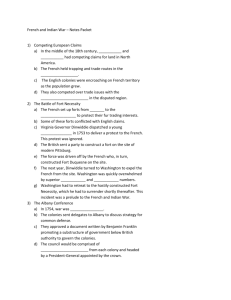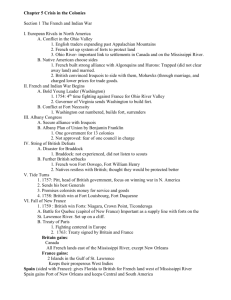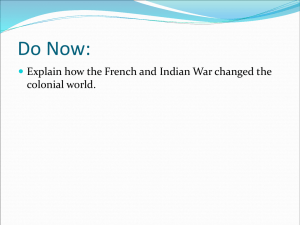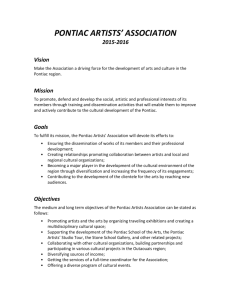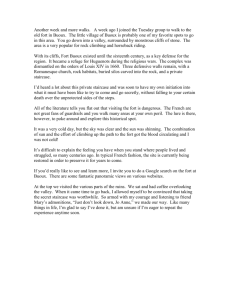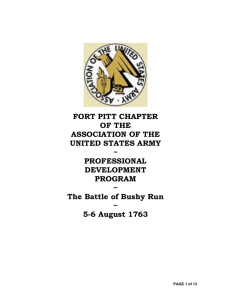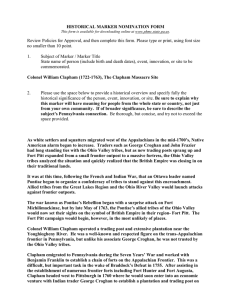pontiac's war - Bushy Run Battlefield
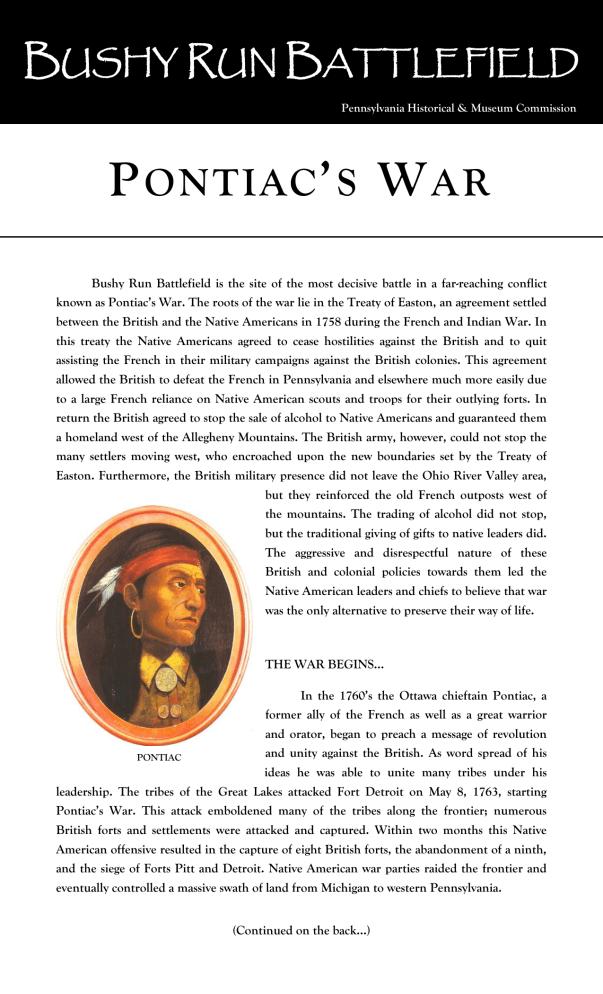
B
USHY
R
UN
B
ATTLEFIELD
Pennsylvania Historical & Museum Commission
P
ONTIAC
’
S
W
AR
Bushy Run Battlefield is the site of the most decisive battle in a far-reaching conflict known as Pontiac’s War. The roots of the war lie in the Treaty of Easton, an agreement settled between the British and the Native Americans in 1758 during the French and Indian War. In this treaty the Native Americans agreed to cease hostilities against the British and to quit assisting the French in their military campaigns against the British colonies. This agreement allowed the British to defeat the French in Pennsylvania and elsewhere much more easily due to a large French reliance on Native American scouts and troops for their outlying forts. In return the British agreed to stop the sale of alcohol to Native Americans and guaranteed them a homeland west of the Allegheny Mountains. The British army, however, could not stop the many settlers moving west, who encroached upon the new boundaries set by the Treaty of
Easton. Furthermore, the British military presence did not leave the Ohio River Valley area, but they reinforced the old French outposts west of the mountains. The trading of alcohol did not stop, but the traditional giving of gifts to native leaders did.
The aggressive and disrespectful nature of these
British and colonial policies towards them led the
Native American leaders and chiefs to believe that war was the only alternative to preserve their way of life.
THE WAR BEGINS…
In the 1760’s the Ottawa chieftain Pontiac, a former ally of the French as well as a great warrior and orator, began to preach a message of revolution and unity against the British. As word spread of his
PONTIAC ideas he was able to unite many tribes under his leadership. The tribes of the Great Lakes attacked Fort Detroit on May 8, 1763, starting
Pontiac’s War. This attack emboldened many of the tribes along the frontier; numerous
British forts and settlements were attacked and captured. Within two months this Native
American offensive resulted in the capture of eight British forts, the abandonment of a ninth, and the siege of Forts Pitt and Detroit. Native American war parties raided the frontier and eventually controlled a massive swath of land from Michigan to western Pennsylvania.
(Continued on the back…)
P
ONTIAC
’
S
W
AR
THE DECIDING FACTORS:
THE BATTLE OF BUSHY RUN, THE OHIO EXEDITION, AND THE DEATH OF PONTIAC
The British now realized the severity of the situation and sent two relief expeditions into the Native American territories: one to Fort Detroit, the other to Fort Pitt. The Swiss mercenary soldier and veteran of the Forbes campaign of the French and Indian War, Colonel
Henry Bouquet, led the Fort Pitt expedition. Bouquet and his column of 450 soldiers left
Carlisle and began the long march to the besieged fort. Arriving at Fort Ligonier, which had repulsed a Native attack one month earlier, Bouquet and his troops headed to Fort Pitt.
On August 5 th , 1763, Bouquet expected to march to the Bushy Run Station between forts
Pitt and Ligonier, to rest and refresh his troops with water. The Natives Americans who had been besieging Fort Pitt, however, broke off the siege to face the greater threat. Around 1:00 pm on August 5 th the natives attacked Bouquet’s advance guard at the present site of Bushy
Run Battlefield. The exact number of natives is not known, but estimates range from 110 to
400 warriors. Using their hit-and-run tactics and outflanking the British troops in a half-moon formation, Bouquet’s troops suffered 50 causalities. The British retreated to Edge Hill, where they built a small fortification out of flour bags to protect the wounded. The attack waned as night fell.
The attack resumed early the next morning. Bouquet, in a tactical move, ordered the feigned retreat of two of his companies, leaving the south side of their position weakly defended. The natives moved in to attack the weakened position. The two companies who had retreated, however, swung around through a small valley to the east and attacked the exposed native force, which was caught in the crossfire. The Native Americans were flanked and then routed, chased into the woods by the British for a few miles. Thus the battle ended and the siege at Fort Pitt was relieved. The British lost 115 men killed, wounded, and missing, while the natives lost 50 to 60 warriors.
In October 1764 Bouquet and a British force of
1500 men arrived at the Muskingum River in the Ohio country to dictate peace with the Native Americans and receive any European captives who might have been taken during Pontiac’s War. Bouquet concluded these negotiations a short time later and returned some of the captives to their families. Pontiac’s War officially came to an end in 1765, after a long process of fighting and negotiations which finally gave the
British control of the Illinois country, as well as the remaining French troops and colonists in North
America.
Pontiac, meanwhile, lost much prestige with his own people due to his defeat by the British. In 1769 he was beaten to death by a Peoria warrior in the Indian trading village of Cahokia, Illinois.
